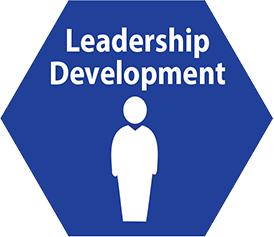
Welcome back, class. Since posting our last lesson, the COVID-19 pandemic has spread across the globe and presented the healthcare field with new, never before seen obstacles. Between the high contagiousness and rapid spread of the virus, patient surges, shortages of personal protective equipment and ventilators, and limited testing supplies, keeping staff and patients safe has become particularly challenging and especially important.

One thing the pandemic has highlighted is the importance of having healthcare leaders that are dedicated to sustaining a culture of safety, even during these unprecedented times. J. Scott Steiner, FACHE, president/CEO, Phoebe Putney Health System, Albany, Ga., spoke on a recent webinar about the importance of prioritizing safety, even when facing massive spikes in hospital admissions and shortages in personal protective equipment.
“I feel so strongly that my job and [the organization’s] job is to keep our team safe,” said Steiner. “This situation [with the pandemic] is no different. To have good patient safety, our teams have to be safe. If our staff isn’t safe, there would be no one to care for the patients. That is why we have been so adamant about [having] PPE and I was willing to be 15 times the price for N-95 [masks]—because that is the commitment we make.”
So how do we ensure safety remains a focus from the top down? We prioritize safety in the selection and development of leaders. This is one of the six leadership domains outlined in Leading a Culture of Safety: A Blueprint for Success.
According to the Blueprint, “It is the responsibility of the CEO, in collaboration with the Board, to include accountability for safety as part of the leadership development strategy for the organization. In addition, identifying physicians, nurses and other clinical leaders as safety champions is key to closing the gap between administrative and clinical leadership development.
Using the Blueprint as a framework, let’s look at a few tactics to educate and develop leaders at all levels of the organization who embody the principles and values of safety culture.
Tactics for Prioritizing Safety in Leadership Development
When it comes to hiring and promoting professionals, the selection process for both current and emerging leaders should be predicated on their understanding of, dedication to and alignment with the organization’s vision for patient and workforce safety, communication skills and modeling of expected safety behaviors.
Here are some tactics to help prioritize safety in individual professional development:
- Define and develop organizational leadership competencies in safety culture and safety behaviors and ensure that all current and future leaders and the frontline workforce receive education in selected competencies.
- Build an incentive program into leadership reviews that is focused on reporting performance on key culture of safety metrics.
- Provide continuing learning opportunities in safety and culture, with a focus on experiential learning.
- Tie measures and performance on safety and culture to leadership development priorities, talent management reviews and succession planning.
- Build a guiding coalition of champions, including clinicians and frontline workforce members, that provides candid and honest feedback to the CEO.
- Recommend that each senior executive participate in communication with and apologies to patients and families who have experienced harm.
These are just a few tactics leaders can implement at their organizations. For more tactics, and to learn what questions you should be asking to assess your progress, download Leading a Culture of Safety: A Blueprint for Success.
Homework
Leading for safety is a daunting challenge that requires strength, courage and commitment. You can make that commitment by signing the We Lead For Safety Pledge and taking the Culture of Safety Organizational Self-Assessment.
You can also watch the free recording of our webinar, “Leveraging Leadership for High Reliability Safe Care,” which is currently available in our COVID-19 Resource Center.






















